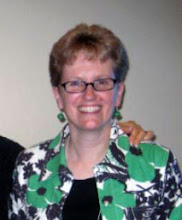
In my role as Virtual Trainee for the AUCD I attended their annual meeting last fall with people from universities all around the country who work to improve lives for people with disabilities through research, service and policy. After a full day of learning and a high-energy poster session I gathered with a group of starving people and went to dinner.
In the course of dinner conversation we ended up discussing how everyone became interested in working with people with disabilities. As a mom I found it fascinating that, while everyone’s stories were unique, they were all based on relationships they’d had with people with disabilities at some point in their lives.
One of our fellow diners, Dr. Erik Carter, had gotten to know people with disabilities while working as a camp counselor—he had intended to work with the non-disabled kids at the camp, but had been re-assigned much to his surprise. He said his experience at that camp changed his life—in fact one of the campers in his charge was the person that invited him to faith.
His experience so profoundly moved him that, in addition to his career work in education and research, he wrote a book to help congregations successfully integrate people with disabilities into their faith communities.
Including People with Disabilities in Faith Communities: A Guide for Service Providers, Families and Congregations extols the value of inclusion for faith communities, shares the current research about people with disabilities in congregations and gives tools and practical advice for applying principles of hospitality, belonging and continuous growth in your own community.
He builds a case for inclusion that is convincing and compelling.
“It is not enough for congregations to simply mirror the rest of society when it comes to including people with disabilities. Rather, they are called to be leaders in transforming the culture—to graciously, lovingly and actively influence their communities. When congregations push toward a higher standard than the rest of society; when they demonstrate leadership, rather than lagging behind; and when their efforts stand in stark contrast to those of others in their community, it sends a powerful message. When a welcome is compelled by deep love and a sacred call, rather than by legal decree, it speaks powerfully to a watching world and provides strong evidence of one’s faith commitment.” (p. 17)
Later he goes on to say:
“It is more than a “nice idea” to include people with disabilities in your congregation. People of faith are called to view people with disabilities as integral to the wellbeing of their community; every member should be regarded as indispensable. When an entire segment of the population remains absent from the body of believers, that community not only remains less than it could be, it remains less than it was intended to be. Wholeness will always remain elusive to a community when the gifts and contributions of a whole segment of people are missing. Indeed, it is the community that becomes “handicapped” when people with developmental disabilities and their families are not present.” (p. 18)
The book also draws a distinction between congregations that allow people with disabilities to be present and those in which these same folks belong, participate and do more than receive but also serve and contribute their gifts.
Beyond the why’s of inclusion, a good portion of this book is dedicated to the how’s as well.
There are questionnaires to evaluate physical and attitudinal barriers to , religious education and other programs, and the needs of individuals who wish to worship with you. There is a chapter on discerning and providing supports, a chapter on the role of support staff and one about expanding your initiatives to impact your larger community.
The whole book is geared to help congregations progress continuously in their hospitality.
In short, get 2 copies of this book—one for you and one for your faith community. I think any community would benefit from the support and challenge this book presents. Churches that are struggling (like this one in Minnesota)would be much stronger after studying this book together.
In honor of this blog carnival Dr. Erik Carter has donated a signed copy of his book for a drawing. If you would like to join the drawing, leave a comment by 5pm 5/29/08 and I will draw a name and we'll send it along. Good luck!
My other post on disability and faith is here.
(Image of book from here.)






5 comments:
Terri - allow me to be first on the list for the drawing! Thank you so much for blogging your writings! So inspirational!
kathy
Enter me too! Looks like a great book.
Looks like a good book.. and one my church could use. (Our senior adults fought the inclusion of an elevator in our expansion project because, get this, they have no need to go upstairs so it would obviously be a waste of space and money. Never mind the several young adults with mobility issues).
I would like to be entered into the drawing, but I was wondering... I'm Jewish. Is the book still general enough to apply?
Hi Cheryl, Here is what the book's author says in anwer to your question:
Absolutely...the book was written to be applicable across a variety of faith traditions. Of course, that means that some of the strategies were necessarily a bit more general. And I tried to point readers to more targeted resources whenever possible (particularly in the appendices). But, the strategies are still very relevant, even if they need to be tailored a bit for any given congregation.
Erik
Post a Comment